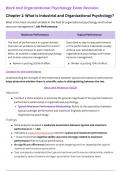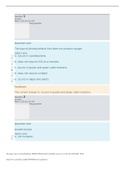Summary
Summary Resume Work in the 21st Century: An Introduction to Industrial and Organizational Psychology, 4th Edition - Work & Organizational Psychology (P_BARORPS)
- Course
- Institution
- Book
This summary has all the information needed to pass the course Work & Organizational Psychology [Part 1 exam = got an 8.9/ Part 2 exam = 8.1] - It has the content for period 2 (chapter 1-10) and period 3 (chapter 11-13) - You will certainly pass the course if you properly study these notes. -Hop...
[Show more]




